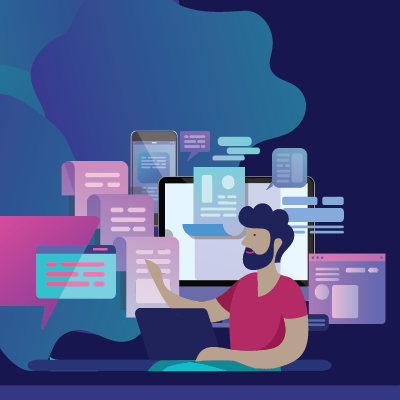
Everyone understands that content is king, but in reality, content is only king if it’s relevant. When someone visits your website, they want to know how and why you are the right fit for them. That is why personalizing web content is such an effective way to help your organization convert leads. In fact, a study conducted by One Spot reported that 78% of people say that if a brand provides personally relevant content, it increases their intent to purchase the brand’s product or services. Because a website is likely the first touchpoint in many prospect journey’s, creating a personalized content experience from the start can assist in moving through the buying process. There are a few tips and tricks to personalizing your web content, all of which are crucial to the overall experience.
For the purpose of this blog, when we say content personalization, we’re referring to pieces of content that only appear to certain web visitors based on their history and habits while browsing your website. Here are some website content personalization best practices that we recommend keeping in mind as you go.
Identify Your Audience
Identifying your audience is the first and most important step in any part of a marketing campaign, plan or piece of content. You want to make sure you have relevant and applicable information that speaks to your potential buyers. For example, if you own a medical device company, it is likely that most of your website visitors are interested in purchasing a medical device. With web content personalization, you can tailor your website to complement what the visitors are looking at.
How do you know what content to provide to the visitor? The characteristics of your buyer personas drive this decision marking. Having the right data, especially behavioral data, can provide insights as to what content would be most valuable for them to see.
- Behavior: What was the behavior of your visitor on your website? Did they download an eBook? Did they read a certain blog, clicked a CTA, then signed up for your newsletter? These are behavioral aspects of users. Noting what content is interacted with and the path they took to get there can be insightful for future visits.
For example, if a potential buyer goes to your medical device products landing page, they might be interested in the specific offerings your company has. Knowing this, you can tailor a personalized content experience on this specific landing page by setting up appropriate pop ups and offering supplemental content. To continue this example, you can provide the prospective buyer with an infographic or short video as to what the full product offerings are and related information. With content personalization, you can match content to various personas and make your company even more relevant to what they need.
Reuse Applicable Content
The great thing about personalizing content is that you can leverage existing content. You don’t have to completely recreate your content but tweaking it or breaking down into smaller parts can be beneficial in different situations. Let’s say you have a white paper on financial trends created but you don’t think it will resonate with a first-time site visitor. White papers can be long and tedious to read and might deter the user from revisiting your site. A solution might be to create an infographic or short video that contains the same content as the whitepaper, but in a quick, digestible form ideal for someone who is looking to learn more about your business and your product or service offerings. Once that user has visited the site multiple times and read the infographic or watched the video they move down the funnel to a place where you can provide them with more in-depth information. You want to hook a first-time user with engaging and relevant content, but you only have 50 milliseconds (0.05 seconds) to make an impression! 94% of first impressions are driven by design elements, so it is crucial that the design of your website, landing pages and other content materials you personalize are engaging.
Segmentation
A part of web content personalization is segmentation. Creating segments lets you narrow down on who is visiting your website and what content or pages they’re most interested in. You may be a medical device company, but you’re going to have different types of visitors coming to your site and it’s crucial to know who they are and what they want to see. Those that search for medical devices might be hospitals, small doctor offices and even singular consumers. While these groups may have the same end goal, they’re going to have different ways of meeting that goal. When you segment content on a website, you begin to see how audiences are engaging differently and that enables you to provide them with the information they need.
Implement a Testing Strategy
A/B testing is one of the most important things you can do in content marketing. You can approach content personalization in the same manner you would email or landing page testing. Splitting content allows you to test different items such as titles, colors or fonts. For example, if you want to provide your visitors with a piece of content that gives a general overview or your services, you can test this by creating two pieces of content. You could create an infographic and a video both featuring the overview concept. Then, test each on your website to see which performs better among your visitors. Whichever one gets more clicks and conversions can then serve as your general service overview content piece. Tailoring content to what your visitors prefer to see and interact with can be insightful for future content personalization efforts and overall user experience.
To learn more about web content personalization, reach out for a free marketing consultation!
There are no comments